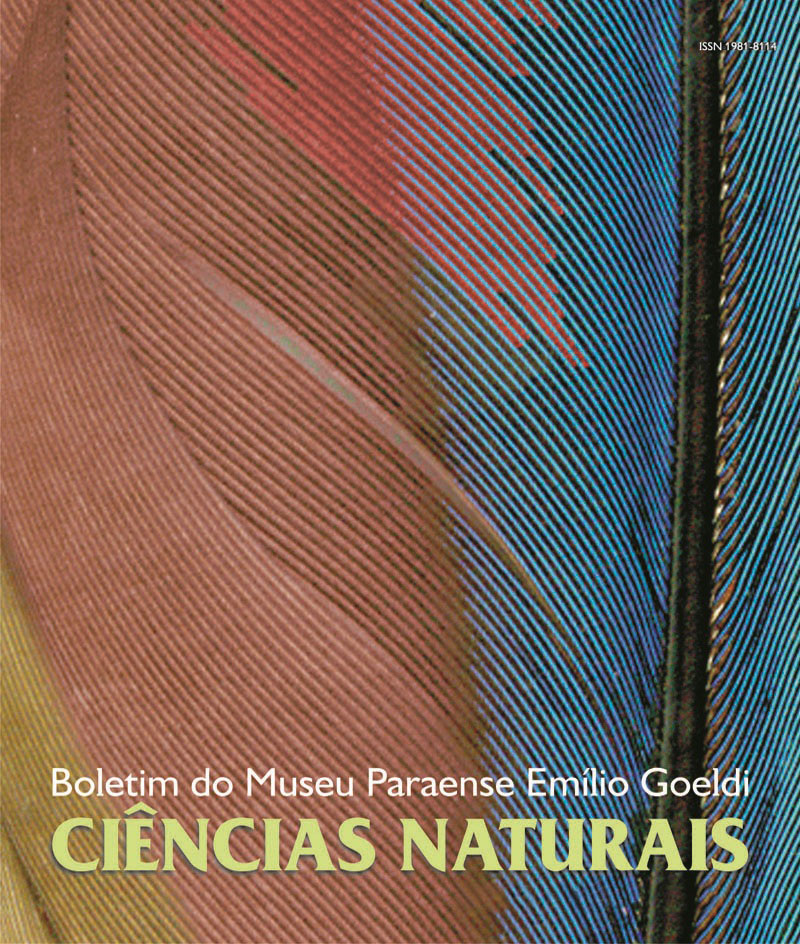Structure of mangrove stands on the Bragança peninsula, Pará, Brazil
DOI:
https://doi.org/10.46357/bcnaturais.v1i3.727Keywords:
Mangrove, Forest structure, BragançaAbstract
The study describes the forest structure of three mangrove stands (Acarajó, Furo do Meio and Furo Grande) on Bragança peninsula, north-eastern Pará state, Brazil, using the point centered quarter method (PCQM). Three typical mangrove tree species were found: Rhizophora mangle, Avicennia germinans and Laguncularia racemosa. At all stands, R. mangle reached the highest importance values. At AC, we found individuals of various size classes, indicating possibly a constant rejuvenation process. At Furo do Meio, there were various individuals of medium size, indicating a peak of renovation event in the past. Furo Grande was characterised by a stand still in development, with mainly medium-sized trees and few larger specimens. The relationship between dbh and height showed that height growth is size limited. Tree density appeared low in comparison to other reports; however, examination of the dbh size class distribution reveals that the stands of the present investigation are mainly composed of comparatively large trees. Cluster analysis separated two groups, segregating Furo do Meio from both other sites (Acarajó, Furo Grande).
Downloads
Published
Issue
Section
License
Publication means fully assigning and transferring all copyrights of the manuscript to the journal. The Liability Statement and
Assignment of Copyrights will be enclosed with the notice of acceptance. All the authors must sign the document and return it to the journal.






